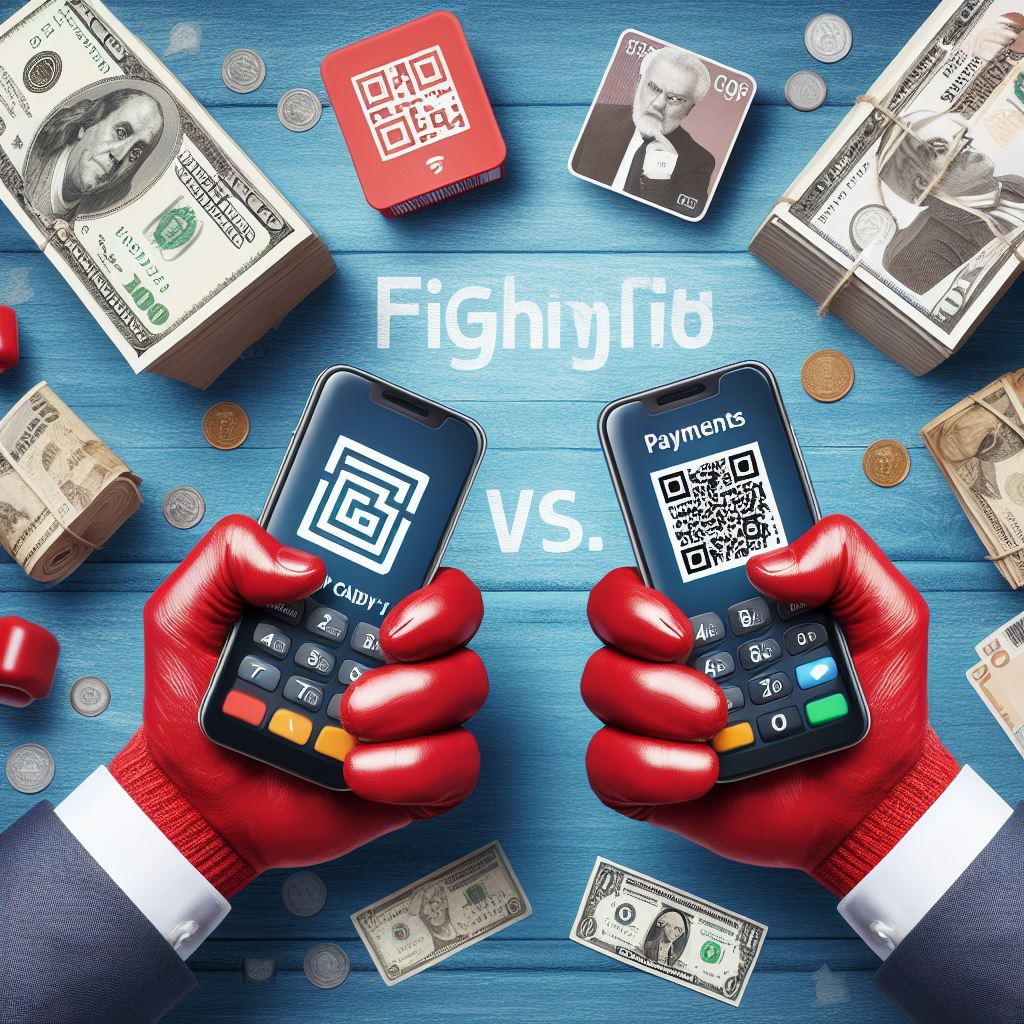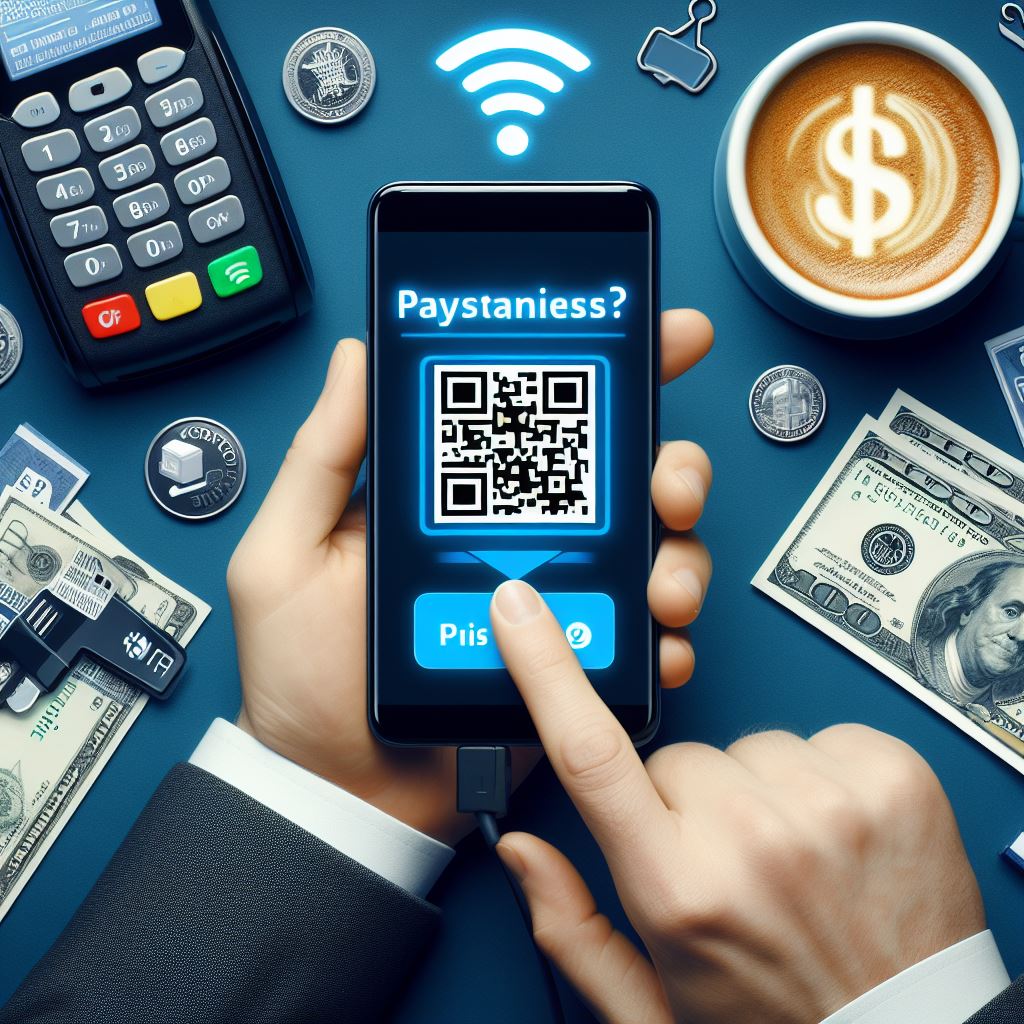1. Introduction
In a world where the tap of a phone can purchase a latte and a scan of a code can book a flight, the arena of digital transactions is no less than a battleground, with two formidable warriors: NFC (Near Field Communication) and QR (Quick Response) Code payments. This isn’t just a story of technological evolution; it’s a tale of how our wallets have transformed into an extension of our digital identity, and how the once futuristic dream of ‘tap, pay, and go’ has become an everyday reality.
As we stand at this intersection of convenience and innovation, this introduction serves as your portal into a world where every transaction is a ripple in the digital payment ecosystem. The protagonists of our story, NFC and QR Codes, are more than mere payment methods; they are emblematic of a society that has embraced the digital revolution in every tap and scan. This narrative isn’t just about comparing two technologies; it’s about understanding how these technologies reflect our changing lifestyles, our needs for security and speed, and our journey towards an increasingly cashless society.
Join us as we unravel the layers of NFC and QR Code payments. Like detectives, we will sift through the evidence the ease of a tap versus the simplicity of a scan to uncover the truth about which of these contenders might eventually claim the throne in the kingdom of digital transactions. Let the journey begin!

2. Exploring QR Code Payment Systems
QR Code payments function by scanning a generated code, either from a consumer’s device to a merchant’s reader or vice versa. This system has gained significant traction due to its ease of use and minimal infrastructural requirements. QR codes can be generated and scanned using any smartphone with a camera, making it a universally accessible technology. This section will explore the mechanics of QR Code payments, focusing on their flexibility and the low barrier to entry for both consumers and merchants. QR Codes do not require the direct proximity that NFC demands, which can be advantageous in certain transaction environments. The versatility of QR Codes extends beyond payments, as they can also be used for promotional purposes, loyalty programs, and even ticketing.
3. Comparative Analysis: NFC Vs. QR Code Payments
This segment offers a side-by-side comparison of NFC and QR Code payment systems. Key aspects of this comparison will include transaction speed, user convenience, infrastructure and cost implications, and global accessibility. NFC payments are often lauded for their speed and the added security that comes with proximity-based transactions. However, they require both the consumer and the merchant to have NFC-enabled devices, which can be a limitation in regions where such technology is not widely adopted. On the other hand, QR Code payments are praised for their universality and low barrier to entry. They can be easily implemented in a wide range of contexts, from small local vendors to large-scale enterprises. However, QR Codes may be perceived as less intuitive than the simple ‘tap’ of NFC, and there are concerns about the security of QR Codes, as they can be tampered with or duplicated.
4. User Adoption and Experience
The global uptake of NFC and QR Code payments is influenced by regional preferences, technological infrastructure, and consumer behavior. NFC has seen significant adoption in regions with prevalent NFC-ready devices and terminals, lauded for its quick transaction capability. Conversely, QR Code payments dominate in areas like Asia, appealing due to their simplicity and affordability, despite a potentially less streamlined user experience compared to NFC’s tap-and-go model.
5. Security Perspectives in NFC and QR Code Payments: A Tale of Digital Fortresses

In the realm of digital payments, security is akin to a mythical shield, guarding the treasures of consumer trust and financial integrity. NFC, with its encrypted signals and requirement for physical proximity, is often envisioned as a high-tech fortress, safeguarding each transaction behind layers of digital walls. Its security protocols resemble secret passcodes, changing with every transaction, making it a moving target for potential digital marauders. Our partners https://payneteasy.com
QR Code payments, on the other hand, are like mystical scrolls that can either be a source of power or vulnerability. While inherently secure, the exposed nature of QR Codes often displayed in public or printed on receipts can be akin to leaving the scroll in an open field, where it might fall prey to the cunning illusionists of the digital realm who might replace or manipulate it. However, modern QR Code systems combat this with dynamic generation and encryption, much like a scroll that changes its script with every gaze, adding layers of security to what was once a static symbol.
6. Anticipated Trends and Future Directions: Navigating the Digital Payment Odyssey
As we sail into the future of digital payments, the waters are teeming with innovative currents and winds of change. NFC might soon transcend the realms of smartphones, integrating with the burgeoning universe of wearables and IoT devices. Imagine a world where your watch, your ring, or even your glasses become your wallet, paying for your morning coffee with a mere gesture.
The future for QR Codes sparkles with its own magic, potentially integrating with augmented reality (AR) to create immersive payment experiences. Picture walking through a virtual marketplace, scanning ethereal QR Codes that float in the air, or using your phone to reveal hidden payment gateways in a magical augmented world.
Both technologies are on the cusp of embracing AI and blockchain, potentially transforming them into not just tools of transaction, but also of personalized financial management and enhanced security. NFC and QR Codes might evolve to become more than just payment methods; they could turn into personal finance advisors, analyzing your spending habits, or secure digital vaults, protecting your financial data with the unbreakable chains of blockchain technology.
7. Conclusion
The article will conclude by summarizing the comparative strengths and weaknesses of NFC and QR code payment methods and offering insights into which might emerge as the leading technology in the digital payment space.
Leave a Reply